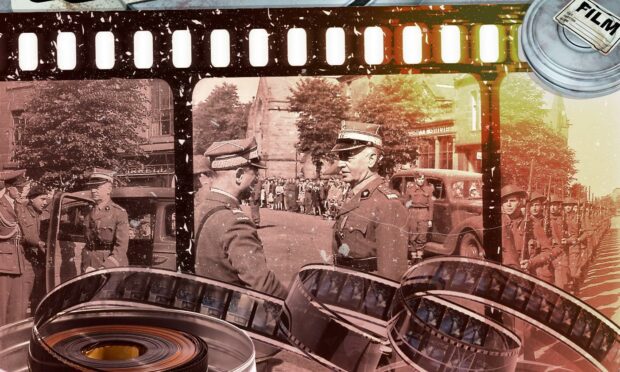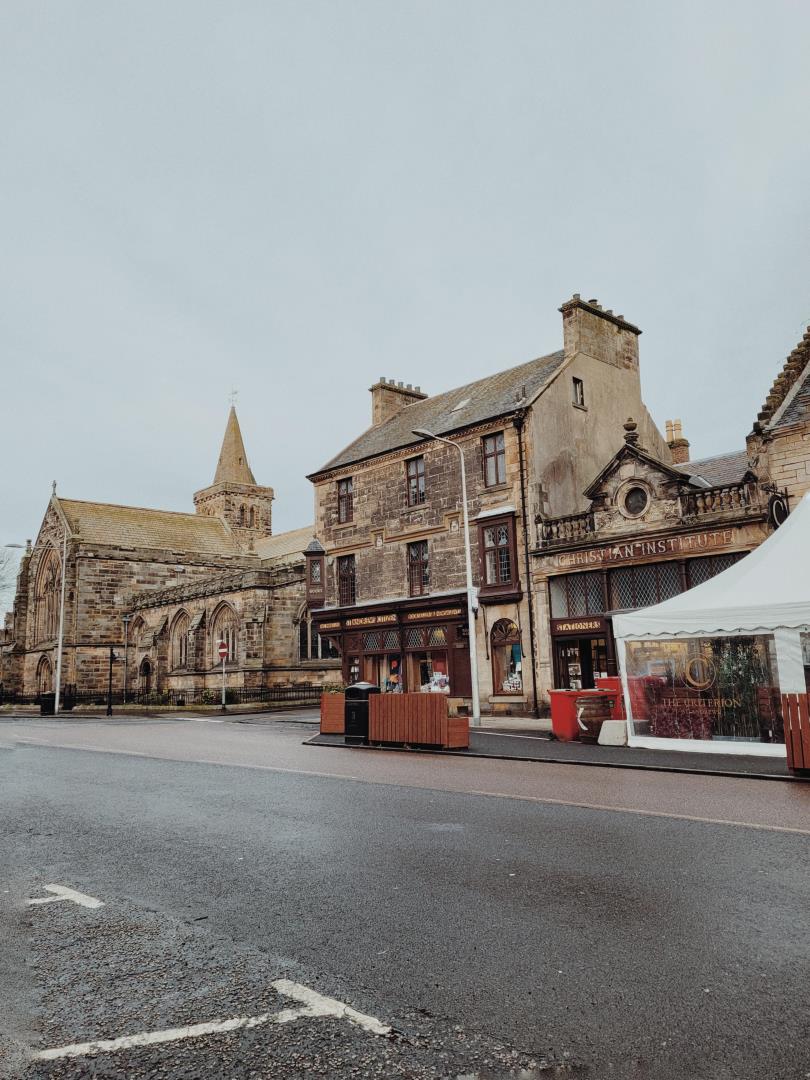A roll of film that was almost thrown in the dustbin has provided a stunning glimpse of St Andrews during the Second World War.
They appear to be surviving images of former Polish prime minister Władysław Sikorski inspecting his troops in South Street during the Second World War.
Local man Tad Kucharski discovered the unlabelled and unmarked photographic film in a rusty container while clearing out his loft.
He nearly threw them out, before having second thoughts.
Tad is now hoping to confirm the images are of Sikorski.
He said: “I didn’t know what it was at first.
“They were in some rusty containers in the loft.
“It was a surprise when I opened them.”
The photographs were taken by his father, Tadeusz Kucharski, who ran a photography and art studio on South Street in St Andrews.
Tad’s father settled in the golf town after serving in the war with the Polish Army.
He later owned local restaurant The Red Gown Café, before opening up his art studio.
He died in 1972 but Tad did not receive his possessions until his mother died in 1991.
Among those belongings were several film strips which Tad simply tucked away in a case in the loft before stumbling upon them before Christmas.
“They were out of sight and out of mind,” said Tad.
“I came across them during a general rummage while I was having a clear-out.
“I almost threw them out but put them through a scanner to see what they were.
“A lot were personal family photographs but there were some surprises, including these images of Polish troops in St Andrews during the Second World War.
“There are no dates or information at all on the photos.
“I hoped someone might be able to come up with more information.”
That’s why Tad decided to share the black and white images on Facebook with members of the St Andrews Photo Corner.
Tad’s post generated lots of interest from the group.
Members were able to identify the photographs as being taken on South Street, which was where Tad’s father’s art studio was situated in the 1940s.
Some also suggested the man in the photographs as being Sikorski who led Poland’s government in exile during the Second World War.
He established good relations with Allied leaders and was seen meeting with British prime minister Winston Churchill on several occasions in St Andrews.
Sikorski was killed in an air crash at Gibraltar in July 1943, and many have speculated that his death at the age of 62 was caused by foul play.
Tad’s photographs are the latest evidence of a long-standing history between Poland and the Fife town.
Scotland and Poland’s relationship began with the Hanseatic League, a medieval confederation of merchant guilds and market towns in central and northern Europe which brought trade to communities in Scotland’s most northerly islands.
In exchange for fishing gear, beer, fruit and ceramics, Shetlanders provided their trading partners with plentiful supplies of fish, grain and wool.
These good relations continued over the centuries, and St Andrews was chosen as a base for around 72,000 Polish troops to be stationed during the war.
Many Poles – like Tad’s father – stayed in the area after the war, and there were around 2,500 Polish-Scottish marriages as a result.
Today the legacy of those exiled Polish soldiers can be seen in the mosaic on the town hall of St Andrews, and through the General Sikorski bust in Kinburn Park.
It is a sculptured bust on a stone pedestal that features in red and white the Polish Emblem, and is inscribed in incised gilt lettering.
He was also given an Honoris Causa Degree from St Andrews University.
Polish students currently studying at the university have welcomed Tad’s photographs as the latest evidence of their link to the historic town.
Tad’s father was one of several Polish artists who have been based in South Street.
Historical illustrator Jurek Putter had a design studio there where he created a series of drawings depicting the history of St Andrews during the Middle Ages.
Most of the drawings depicting Scotland at this time were destroyed during the Protestant Reformation.
Each of Jurek’s pieces is a reconstruction of life in pre-Reformation Scotland from 1460-1560.
Jurek’s Grafic Orzel Design Studio in South Street has since closed, and the series of drawings is completed.
But how does South Street today compare with the 1940s images?
Most of the original buildings that Tad’s father would’ve photographed and lived among still stand, although some have been converted into new stores.
Cars and restaurants replace Polish army troops – but not the Polish community, which lives on in this historic town.
The bond between St Andrews and Poland remains just as strong.
More like this:
Chariots of Fire at 40: St Andrews beach reshoot changed movie history
Trip back in time: A bird’s-eye-view of St Andrews through the decades











